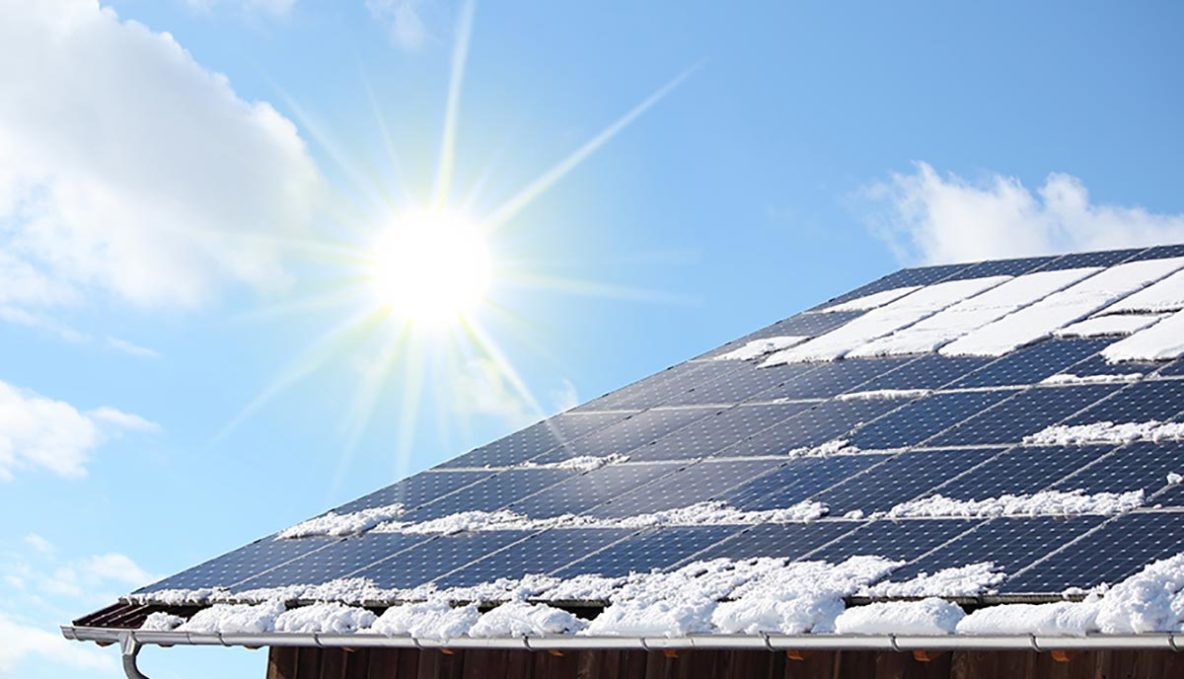With the shortest day of the year fast approaching on December 21st, it’s time to shine the light on another myth about rooftop solar panels.
Contrary to what many might assume, solar panels do not always perform better on hot summer days. This is because photovoltaic (PV) production depends on sunlight and not heat. In fact, extreme temperatures can interrupt the function of solar panels. In a study performed at the Worcester Polytechnic Institute, a typical crystalline silicon PV module will experience a drop in efficiency by about 0.5% for every degree C increase in temperature that exceeds 25°C (or 77°F). A hot climate can negatively affect the output of solar PV units and is less ideal compared to the much lower temperatures of winter.
Does this mean solar panels perform better in the winter?
Not necessarily. Since panels absorb light, the greatest enemy to a PV system is the obstruction of sunlight. Heavy clouds and snow will impede a solar unit and greatly reduce the system’s output productivity. Additionally, for those who live in the northern hemisphere, Earth’s tilt during the winter months accentuates the sun’s southern orientation, making it appear lower and giving us shorter days. Fewer daylight hours means fewer photons to supply a PV system.
Despite these obstacles, solar panels are particularly good at one thing: They are highly resourceful. It only takes one corner of sun exposure to heat a snow-covered unit and speed up the melting process.
Also, have you noticed how you can read a book outside on a snowy night? Snow is so bright that it reflects light like a mirror. When the sun shines on a blanket of snow, nearby solar panels will soak in those reflected particles. Winter doesn’t have to mean energy loss, and there are a few steps we can take to ensure our homes stay warm and energized in the colder months.
How do I get the most out of my panels during a hard winter?
Tilt is everything when it comes to PV systems. Areas that tend to see heavier snowfall often have homes with steep roofs to prevent snow from accumulating and putting stress on the building. A strong tilt is also beneficial for rooftop panels. If a PV unit faces the southern sky at a lowered angle, it will receive direct sunlight and thereby produce more electrons. Even a small adjustment to a system’s tilt will make the biggest difference in energy production.
At Sunlight Solar, we know how much heating a home in the winter can cost. Regardless of whether your household utilizes renewable energy or relies on fossil fuels as its main power source, it is important to ensure that your home is properly insulated with an airtight seal to avoid heat loss. Heat rises and often escapes from attics, especially in older buildings where seals have diminished over time. If the high points of your home are insulated with foam, be sure to check on the foam’s condition regularly, as it can expand and create cracks inside closed walls. Replace incandescent bulbs with LED, and avoid compact fluorescent bulbs that consume high amounts of electricity. Another energy-eater in the home is the refrigerator. Fridges from the 1980’s use an average of 70-80% more electricity than newer models, meaning that it might be time to retire from the retro (at least when it comes to home appliances). Lastly, if you have a rooftop solar system, know that dirt can build up and harden on the surface of a unit, thereby impeding light exposure. A professional cleaning will extend the life of your system and ensure that your home seizes full advantage of the sunshine.
Visit SunlightSolar.com to learn more about rooftop solar and what you can do to save on energy this winter.

